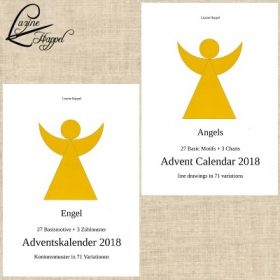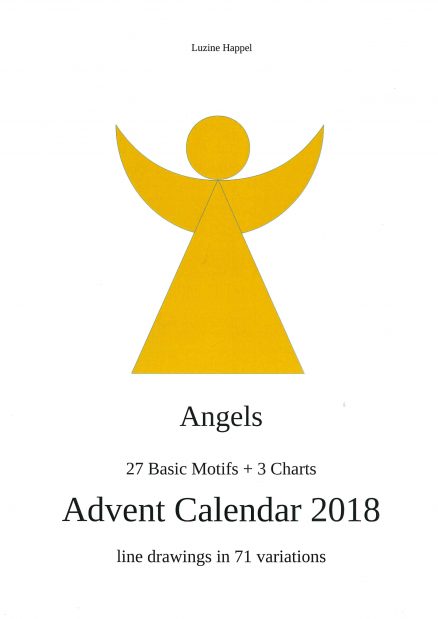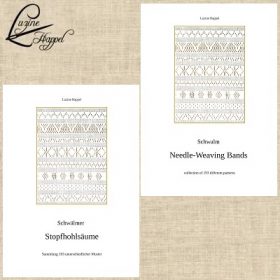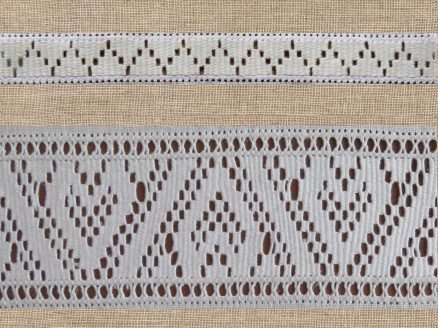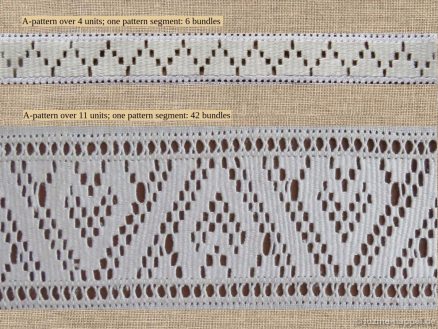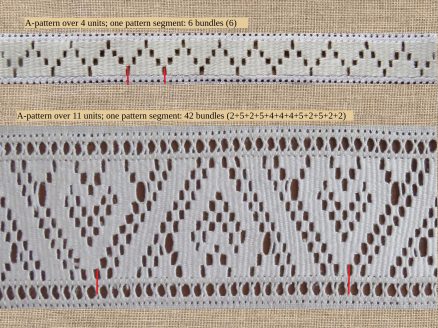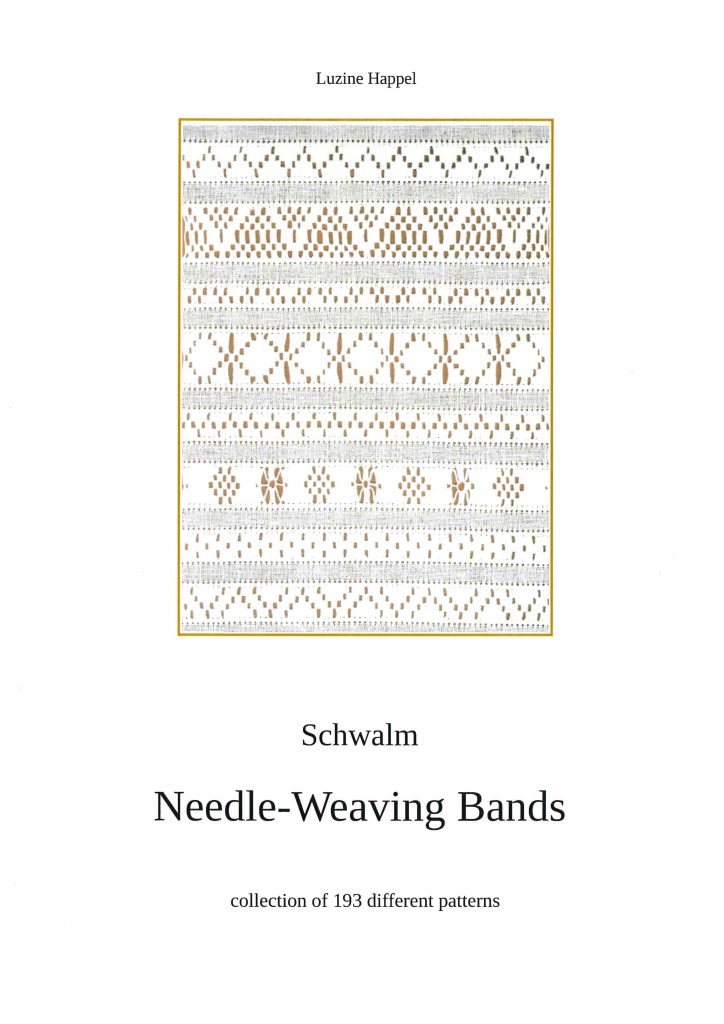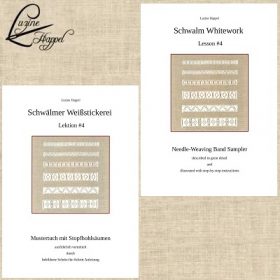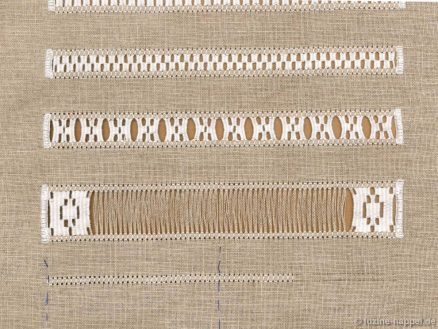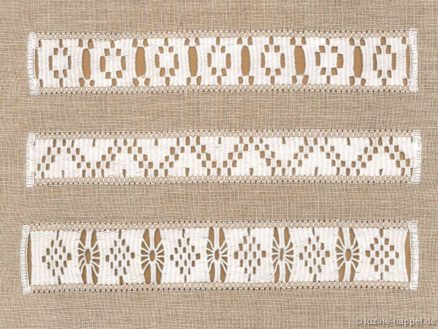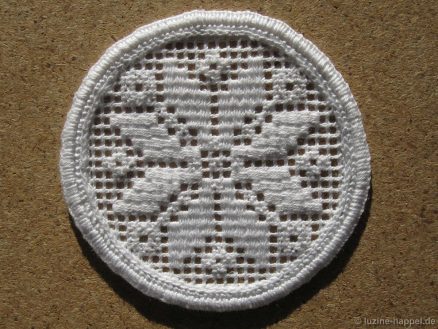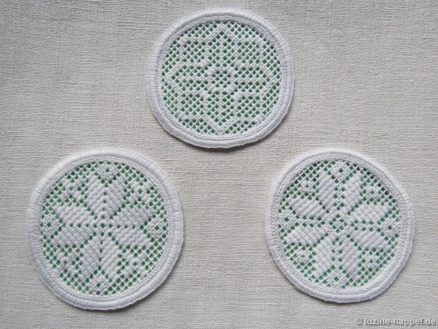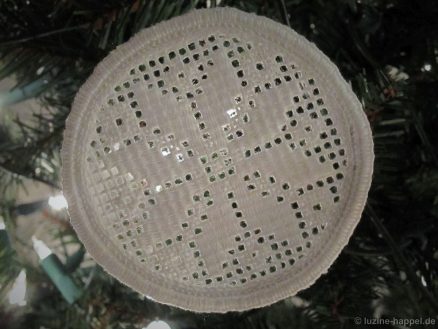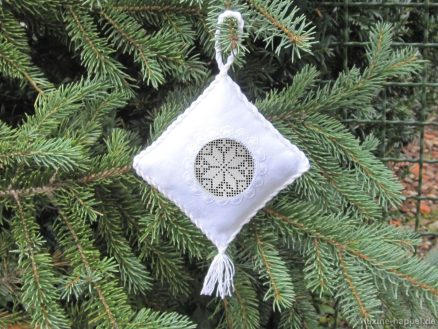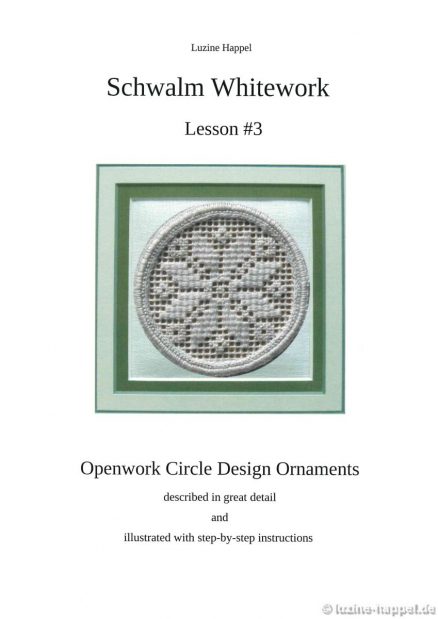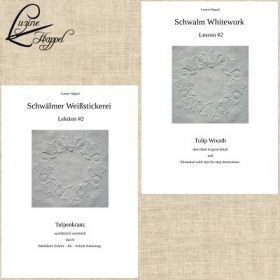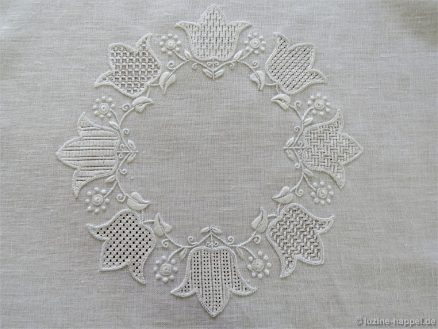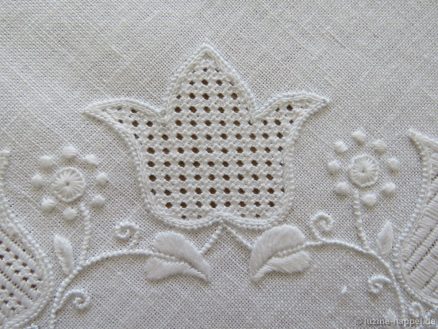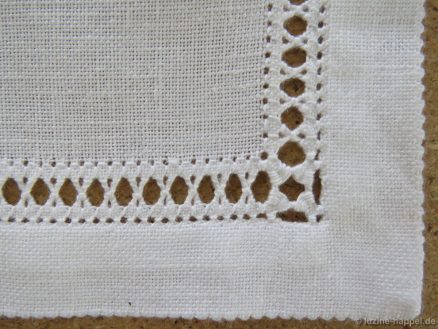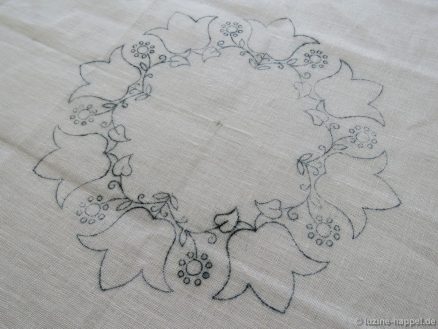At first, I was not sure how this year’s Advent Calendar theme would be received. However, because many of my readers have asked for the corresponding outline patterns, I have learned that the interest is great. So I passed all my drawings on to a graphic designer, who then made the necessary graphics for me.
Now the patterns are put together in a new publication.
There are a few designs that were posted on my blog for which I have no rights. Therefore, the designs of the tea cloth posted on day 2 and the table runners posted on days 5, 12, and 19 are not included. But nine other pretty motifs take their places for a total of twenty-seven basic designs.
Since some of these are shown in several variations, you will find a total of seventy-one variations inside this booklet – included are the three wreath designs 9a, 9b, and 23.
To complete the collection, three charts of angel motifs for openwork were added.
All single designs are shown in the original size embroidered by me. The wreath designs are scaled down to a double-page format.
Because of the different formats, the publication is downloadable in two separate files.
Of course it is also possible to get this publication as a printed booklet for the same gross price (including 7% sales tax) plus shipping charges. This option is not shown in my online shop, so please email me with your request.
27 Basic Designs + 3 Charts
Advent Calendar 2018
line drawings in 71 variations
43 pages and 7 double-pages
3.68 MB + 4.81 MB file size
Text: English
€24.00 (includes 19% sales tax, so it is €20.17 for customers outside the EU)
download here
